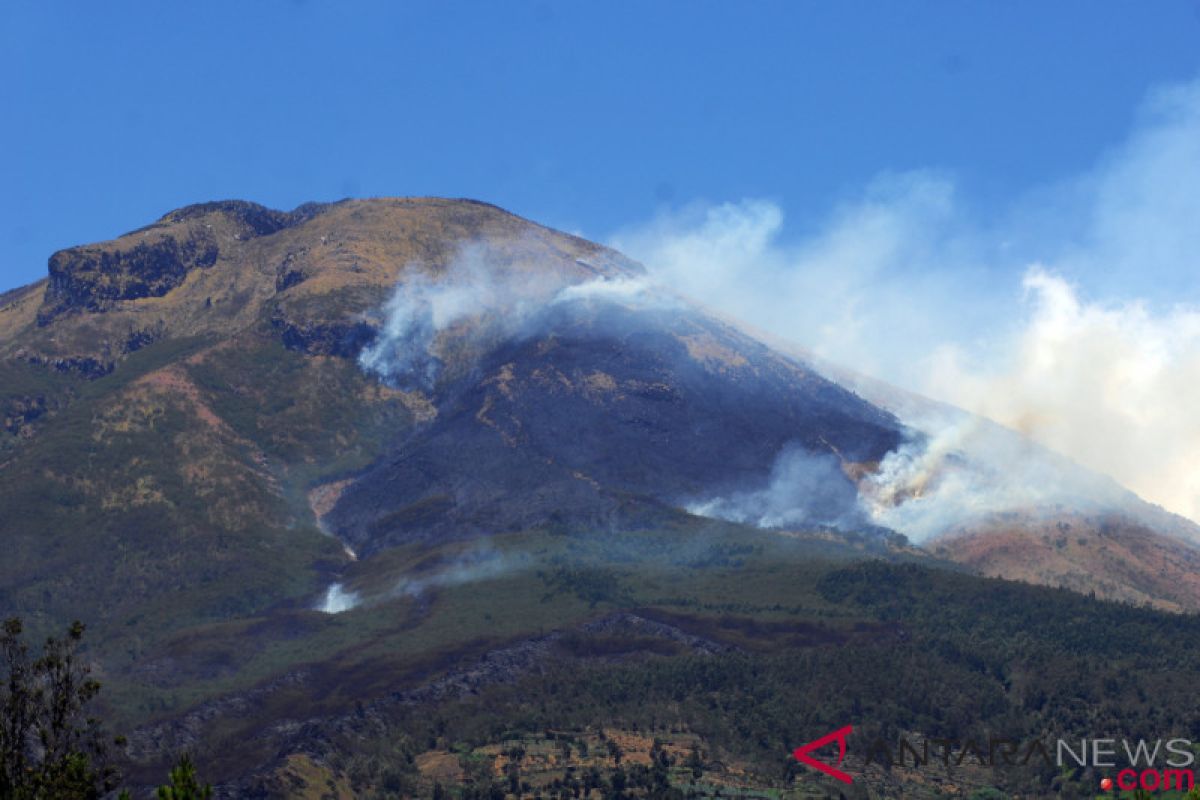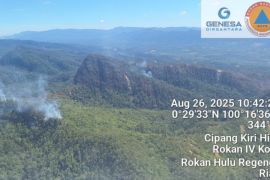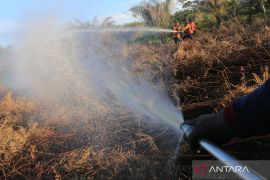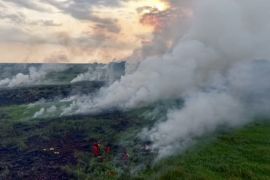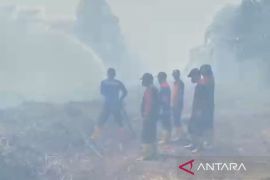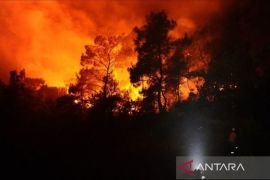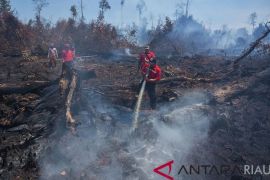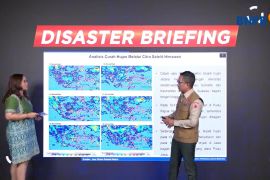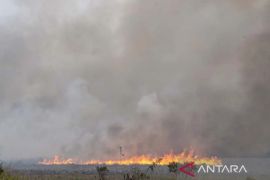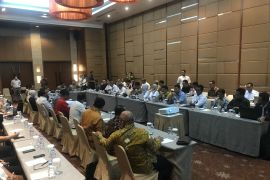Lately, however, the country has been experiencing severe dry season that has induced forest fires on the islands of Java, Kalimantan, and Sumatra.
The ongoing prolonged drought has caused water shortage in several regions, such as in the provinces of East Nusa Tenggara and West Java, and triggered fires in forest areas, particularly in West Kalimantan and Central Java.
In West Kalimantan, schools were recently closed, as forest fires produced smoke that could affect the health of students.
The national disaster mitigation office has deployed four helicopters to help extinguish the fires.
In Central Kalimantan, the East Kotawaringin district police recently named four suspects in land and forest fires in several areas in the district.
Chief of the East Kotawaringin District Police Adjunct Chief Commissioner Mohammad Rommel remarked on September 11, 2018, that the police had investigated the cases of land fires in Ujung Pandaran, Samuda, Baamang, and Mentawa Baru Ketapang.
The police are also investigating the case of large land fires in Mentaya Hilir Selatan District, he noted.
In South Kalimantan, the local inhabitants are optimistic of rain falling again to disperse the haze of the smoke that had begun to blanket some areas in the province.
The people in Banjarmasin and Banjarbaru as well as the surrounding areas recently breathed a sigh of relief after rainfall, lasting for two hours, cleared the air of haze.
Forest and bush fires hit 13 districts since January 2018, ravaging one thousand hectares of tropical forests and plantation areas.
On Java Island, wildfires were reported on at least three mountainous areas: Mount Lawu, Mount Sindoro, and Mount Argpuro.
At least 30-hectare forest areas were razed by fires on Mount Lawu, which is located on the border of Central and East Java provinces.
Joint efforts have been made over the past few days to extinguish the forest fire, but the prolonged drought and strong winds had hindered the fire fighters` endeavors, Djohan Surjoputro, Mount Lawu`s administrative authority, stated recently.
Several hundreds of people, including local volunteers and personnel of state-owned forestry company Perhutani, military, police, and environment agency, participated in the joint efforts.
Owing to its scenic view, beautiful Edelweiss flowers, and crater, Mt Lawu has become one of the mountains in the Indonesian island of Java, which is frequently scaled by mountaineers.
Unfortunately, some 100 mountaineers remained trapped on the peak of Mount Lawu in Magetan District, East Java Province, amid threats from the fires engulfing part of the mountain.
A rescue team had been deployed to evacuate the trapped climbers, Head of the Magetan Disaster Mitigation Agency`s Emergency and Logistics Unit Fery Yoga Saputra had stated on September 11, 2018.
The local authorities notified that Mount Lawu`s climbing trails had temporarily been closed.
A forest fire also engulfed certain parts of Mount Sindoro in Temanggung District, Central Java Province, though, according to a spokesman of the National Disaster Mitigation Agency, it could have been extinguished.
The forest fire destroyed some 156 hectares of land, and the local authorities had still closed the mountain`s climbing trails, BNPB spokesman Sutopo Purwo Nugroho remarked.
Mount Argopuro, located in Krucil, Probolinggo, East Java Province, was also razed by a fire.
Four hotspots were detected on Sept. 12, Setyo Utomo, head of the Jember natural resources conservation office, noted.
The conservation office has dispatched four officers to check the hotspots. However, it will take them at least two days to reach the location of the hotspots, he added.
The East Java natural resources conservation office has indefinitely closed the climbing track of Mount Argopuro since August 10, 2018, due to prolonged drought that could trigger wildfires.
Mount Argopuro is located within the Hyang Highland Sanctuary, which covers parts of the districts of Probolinggo, Situbondo, Bondowoso, and Jember.
The mountain holds the record of having the longest route on Java Island and one of the longest in Indonesia.
In Sumatra, a total of 154 hotspots indicating forest and plantation fires were detected across the island on September 13, 2018.
The number increased from 150 hotspots on the previous day, according to the Pekanbaru meteorology office.
Based on monitoring by Terra and Aqua satellites, 77 hotspots were found in South Sumatra, 33 each in Lampung and Bengkulu, 14 in Bangka Belitung, nine in Riau, four in West Sumatra, three in Jambi, and one on Riau Island.
Riau remained prone to forest and plantation fires due to the prevailing drought, Ardhitama, an analyst of the Riau meteorology, climatology and geophysics office, remarked.
Brigadier General Sonny Aprianto, commander of the Riau forest fire task force, had earlier ordered to take firm action against arsonists.
He also gave shoot-at-sight orders to his officers for perpetrators of forest and plantation fires.
The commander believed that 99 percent of the forest and plantation fires in Sumatra were induced by human activities.
Through legal enforcement and firm control, the Indonesian government has managed to reduce forest fires by 96.5 percent across the country during the 2015-2017 period.
Based on data obtained from NOAA`s satellites, 21,929 hotspots were found across Indonesia in 2015, and the figure dropped to 3,915 in 2016, and again 2,257 in 2017, according to Raffles B. Panjaitan, director of forest and plantation fire control of the environmental affairs and forestry ministry.
The wild fires had razed a total of 2,611,411 hectares in 2015, and the figure decreased to 438,360 hectares in 2016, and again to 165,464 hectares in 2017.
During the 1997-1998 period, Indonesia had experienced a prolonged drought induced by the strongest ever recorded El Nino, which triggered widespread fires.
The greatest loss caused by forest and land fires in Indonesia occurred in 1997, when fires wiped out millions of hectares of forest and plantation areas and caused losses worth US$2.45 billion.
Editing by Otniel
Reporter: Fardah
Editor: Fardah Assegaf
Copyright © ANTARA 2018
